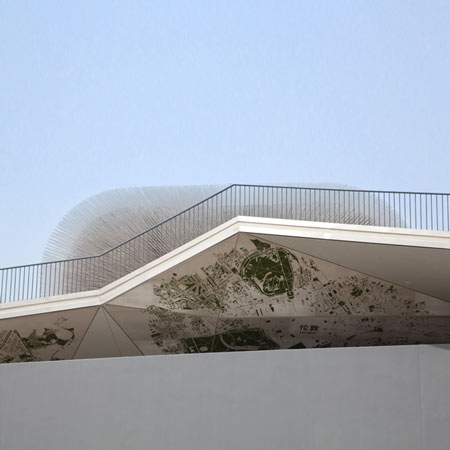
Installations by London agency Troika have been tucked under the edges of the landscaping around Thomas Heatherwick’s UK Pavilion at Shanghai Expo 2010.
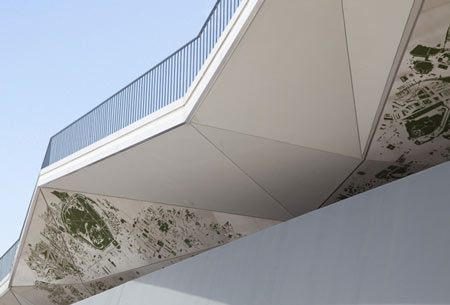
Above: Green City
The exhibition is divided into three areas: Green City, Open City and Living City.
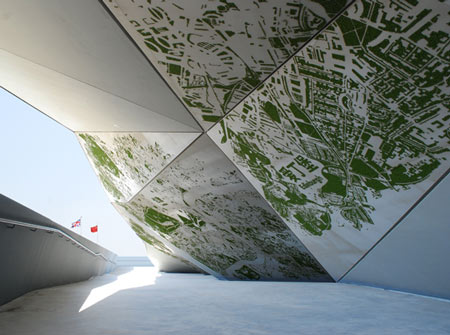
Above: Green City
Visitors come first to Green City, where maps of four UK cities on the ceiling show only the parks, trees and plants, represented by green astroturf.
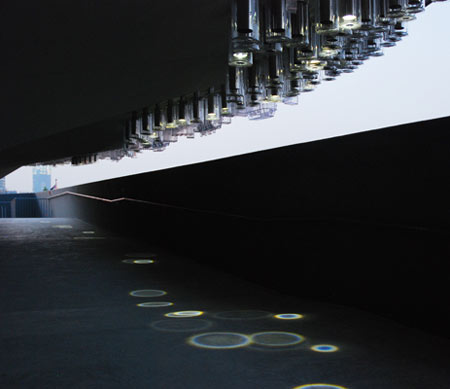
Above: Open City
The second part features transparent models of UK building typologies, suspended upside down from the canopy. Lighting is used to project animated raindrops onto the walkway.
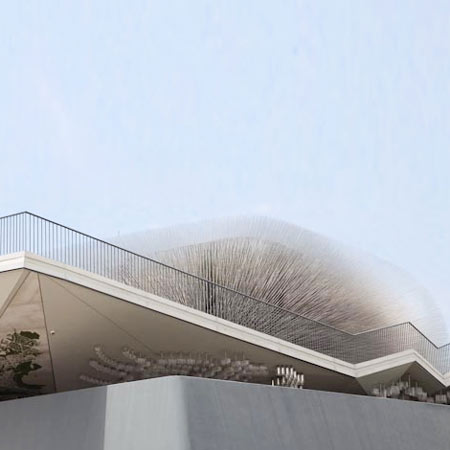
Above: Open City
Visitors then enter the pavilion itself, named Seed Cathedral by Heatherwick Studio.
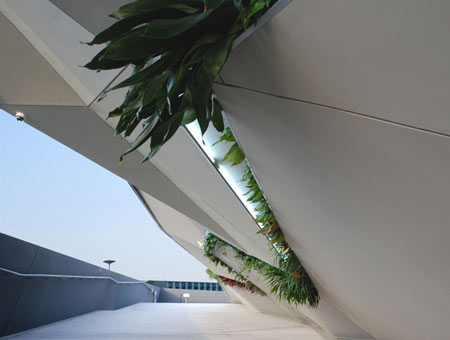
Above: Living City
Upon emerging visitors encounter the final part of the exhibition, Living City, where a crack in the canopy is filled with plants that could be of medical use in the city. In addition to these 30 species, Troika have conjured some imaginary plants that could be engineered for human purposes in the future.
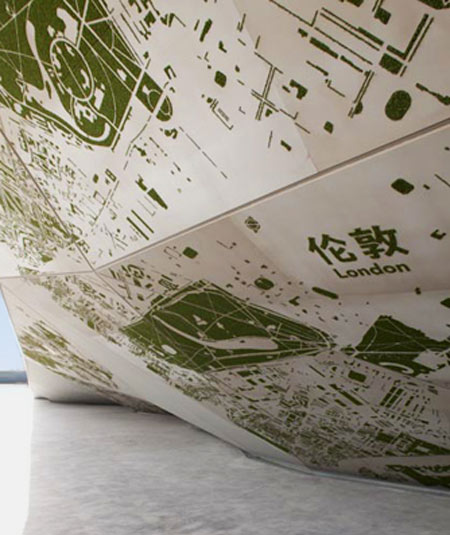
Above: Green City
More information about the pavilion itself in our earlier stories here, here, and here.
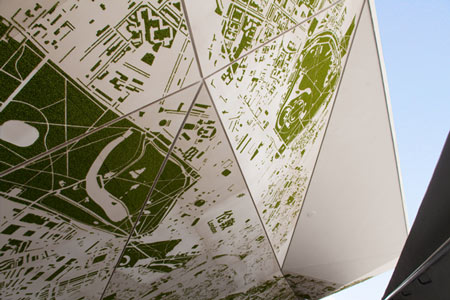
Above: Green City
Watch a movie about the pavilion here.
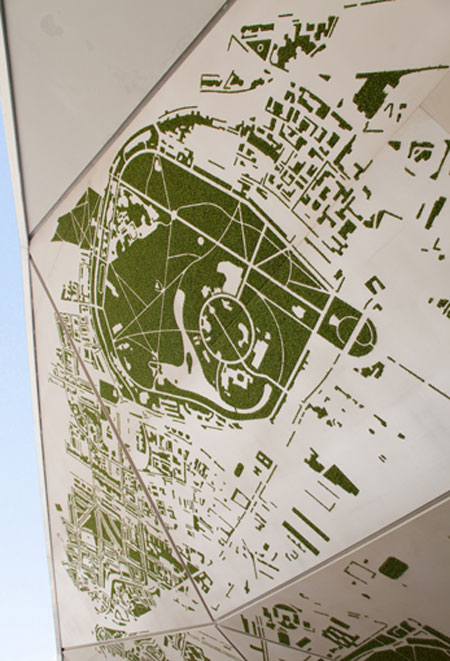
Above: Green City
See all our stories about Shanghai Expo 2010 in our special category.
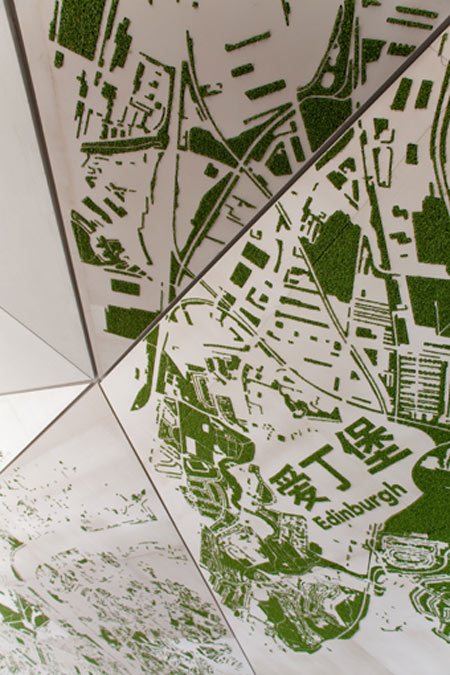
Above: Green City
More about Trokia on Dezeen:
Digital by Design book (October 2008)
Newton Virus (March 2008)
Movie of Cloud by Troika (January 2008)
Art commissions at Heathrow Terminal Five (January 2008)
Here’s some more information from Troika:
Troika has been commissioned by the Foreign and Commonwealth Office to create three new art installations for UK’s Pavilion at the Shanghai 2010 World Expo to be displayed alongside the main UK pavilion; the Seed Cathedral, designed by Heatherwick Studio.
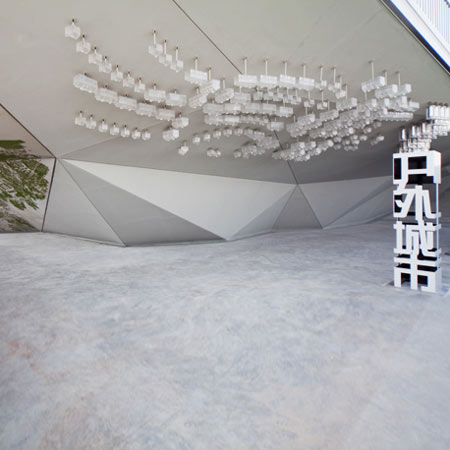
Above: Open City
Set in the centre of a soft and open surrounding landscape, the Seed Cathedral presents a striking visual spectacle. The Seed Cathedral is a 20m high building formed by 60,000 slender acrylic rods which organically wave with the wind, each encapsulating plant seeds to create a breath-taking display of the world biodiversity.
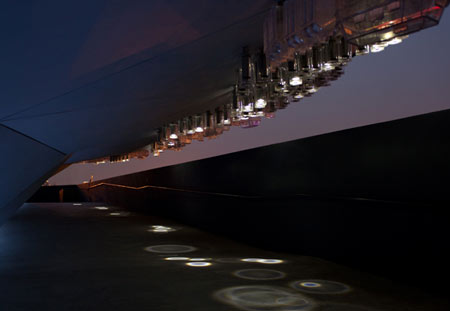
Above: Open City
Instead of a classical exhibition design, Troika devised a narrative concept consisting of 3 immersive and multi- layered installations inviting the visitors to experience the pavilion through all their senses. In each walkway leading to and away from the Seed Cathedral unfolds an installation, part of a triptyque narrative presenting the relationship between Nature and the British cities, past, present and future.
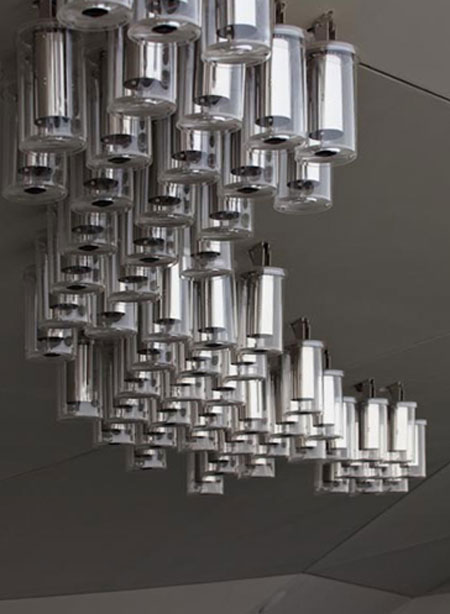
Above: Open City
Within this narrative, the Seed Cathedral embodies the ‘now’. The first and second walkways present the UK’s longstanding tradition of integrating Nature within the urban environment. The third installation, concluding the pavilion experience, explores possible visions for the future, proposing how nature can be used as a catalyst for urban innovation.
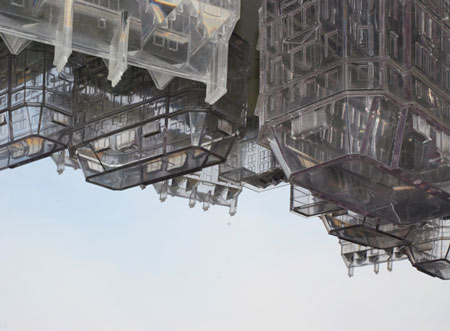
Above: Open City
Green City
Early on in our research, we discovered that the UK is not only a pioneer in the integration of Nature within the city, boosting some of the oldest public parks and botanical gardens, but that even in a large modern capital like London, an astonishing 40% of the city is green, making it one of the greenest cities of its size in the world.
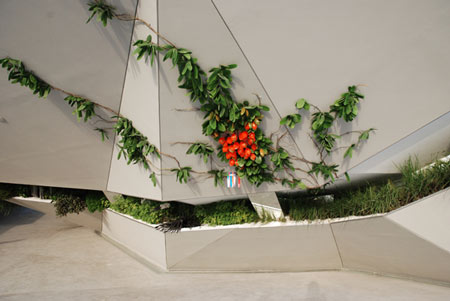
Above: Living City
To demonstrate these facts, we created a series of ‘inverted’ maps of the four UK capitals, which depict every bit of the urban green (parks, gardens, tree lining, roof gardens), while omitting the city itself, its architecture and infrastructure. The green areas are then rendered in a green, soft astroturf recessed into the folds of the concrete canopy of the first walkway.
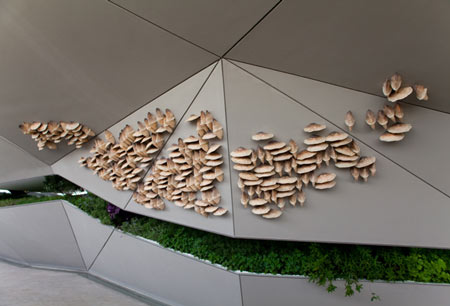
Above: Living City
Visually, the different areas of the cities can still be clearly recognised, and Visitors will have the opportunity to understand the intricacy and importance of Nature within UK cities.
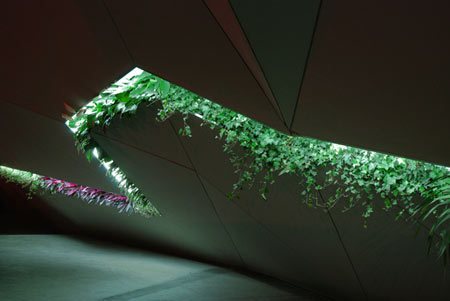
Above: Living City
Open City
The second installation, ‘Open City’, attempts to convey how permeable the typical UK city is to the natural elements. Generally widespread and low-built, with very few shopping malls and sheltered developments, British cities feel transparent and open. The sight of the sky is rarely obscured, and dwellers directly experience the weather, the wind, the fog and the rain.
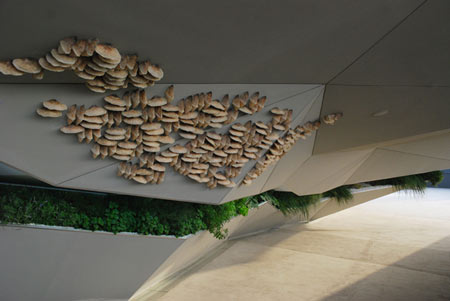
Above: Living City
To convey this feeling to our Chinese audience, the second walkway presents a city floating in the sky, open and transparent. To carry the experience of walking in a UK city, we chose to recreate a selection of 300 traditional UK buildings, cast in transparent resin and hung from the canopy.
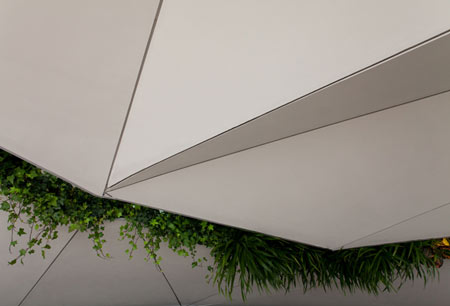
Above: Living City
Completing this installation are clusters of small lighting devices suspended from the ceiling and called ‘light rain engines’, which we specially designed for the pavilion. These devices project on the floor of the walkway a series of animated raindrops rendered in a vibrant, rainbow coloured light. From gentle drizzle to heavy rain, the light raindrops create a beautiful and playful environment in which to reconsider the importance of the one of the most simple and essential natural phenomenon.
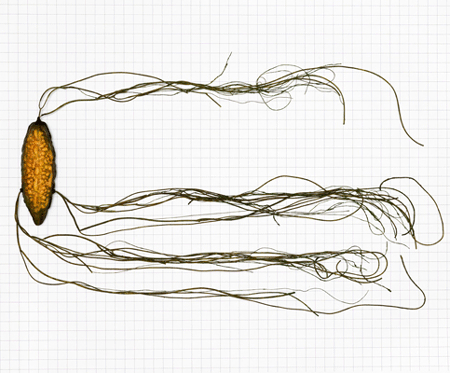
Above: Living City, imaginary plant
Living City
Upon exit of the Seed Cathedral, Troika’s last installation presents a giant green river of plants bursting through the canopy of the last walkway, showcasing some of the most useful plant species for the future of our cities.
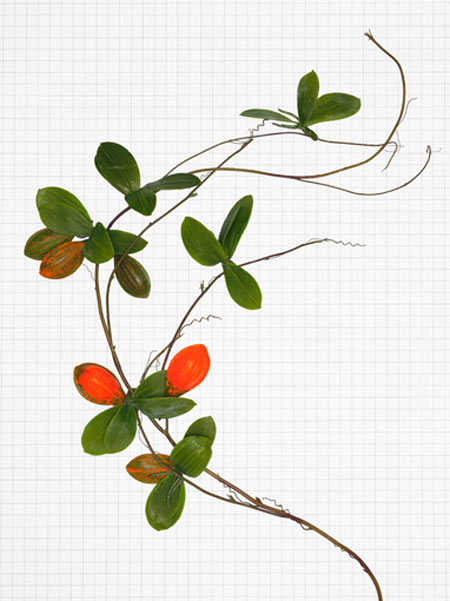
Above: Living City, imaginary plant
Under close scrutiny of leading scientific experts, we identified around 200 different species that could have a direct beneficial contribution to life in the city, of which a group of 30 representative species are displayed live in the final installation. These plants have been selected for their unique properties to purify indoor air, remove contaminants from the soil, provide natural treatment for typical urban ailments, resist urban pollution, be adapted as a food resource within the city, effectively insulate buildings, or provide alternative source of biofuel and plastics.
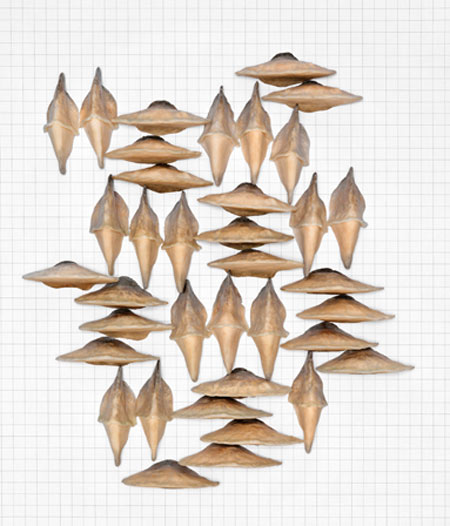
Above: Living City, imaginary plant
While working on this last narrative, we encountered highly inspiring UK research projects, spearheading the fields of bio-technology and biomimetics.
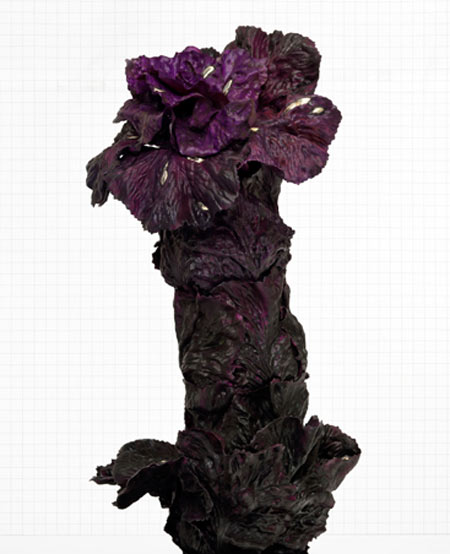
Above: Living City, imaginary plant
To communicate these exciting scientific developments, Troika extrapolated their results to propose a series of ‘Imaginary Plants’, crafted by expert model makers and placed among the real species in the plant river. Eight in total, these future plant scenario address and raise questions about pressing urban issues such as recycling, biofuels and bio-security.
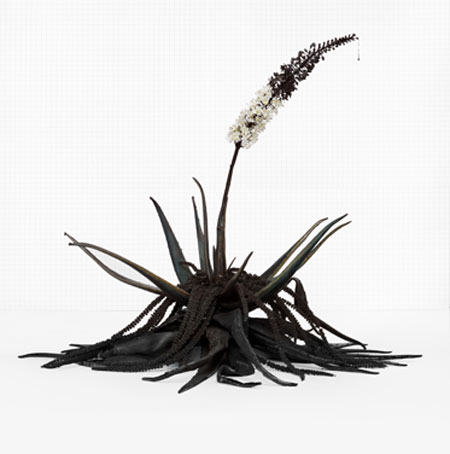
Above: Living City, imaginary plant
We imagined plants that would self-decompose in gain of biofuels, plants which excrete unique pigments to be used in security devices or for easier recycling, and creepers that can sense air-borne viruses.
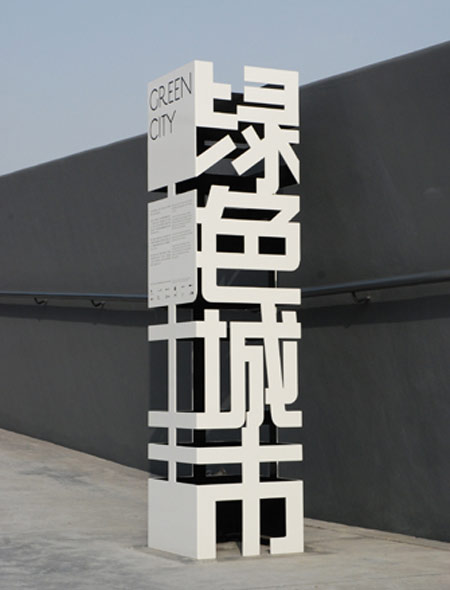
Above: signage
Others scenario include a breed of mushrooms operating as powerful neuronal computers, plants recovering gold from electronic circuits buried in our landfills, and trees which can be used as antennas.
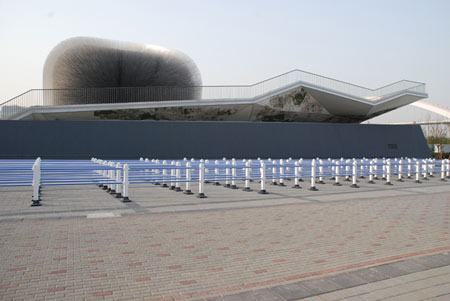
The displayed collection has all elements to tickle the visitor’s curiosity whilst raising legit questions about how plants could contribute to our cities in the future and our collective responsibility towards it.




英国馆确实是很有震撼力,不过去过的很多普通人却没有那种感受